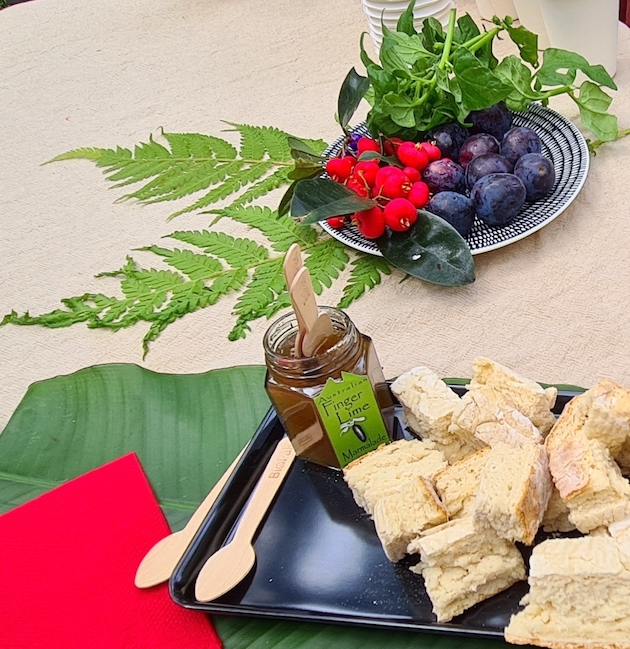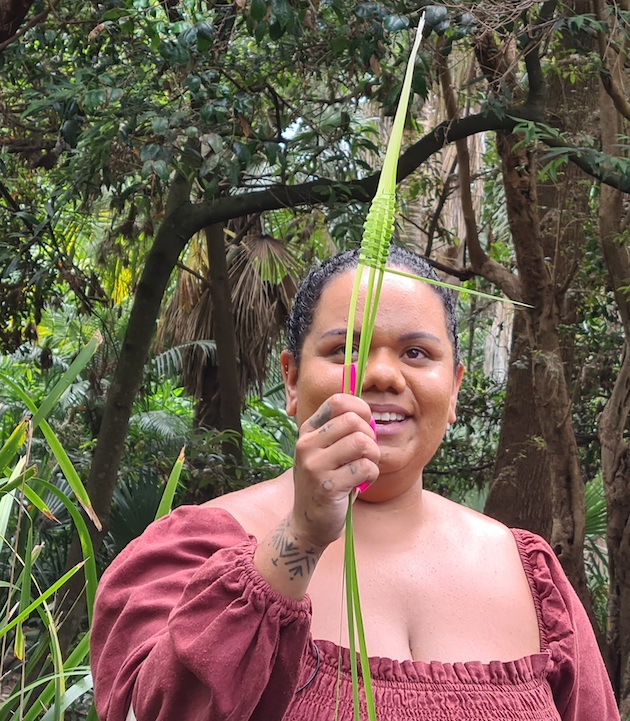Growing Appetite for Nutrient-Rich Native Indigenous Australian Foods — Global Issues
SYDNEY, Oct 03 (IPS) – Growing up in Sydney, Kalkani Choolburra, a Girramay, Kuku Yalanji, Kalkadoon and Pitta Pitta woman from Far North Queensland, would frequently travel with her family up and down Australia’s eastern seaboard. Her grandfathers and uncles would bring fresh catch of dugong, her favourite bush food, and she would go hunting for the short-necked turtle with her aunties and female cousins.
The traditional or subsistence hunting of dugongs and turtles has been an important part of the Aboriginal and Torres Strait Islander (Indigenous Australians) people’s social and cultural lives. Its meat has been a vital source of protein for these communities, who have sustained themselves on the native flora and fauna for thousands of years.
Now, national and international chefs are incorporating some of these native Indigenous produce – notably Kakadu plum, Davidson plum, lemon myrtle, wattle seed, quandong, finger lime, bush tomato, muntries, mountain pepper, saltbush – into their dishes ranging from sushi and samosa, pizza and pies to cakes and muffins.
These quintessentially native Indigenous ingredients are also being used in condiments, relishes, sauces, and marmalades and infused into chocolates, teas and beverages for their unique flavours and textures.
In recent years, there has been a growing interest and recognition of the nutritive and medicinal properties of native Indigenous plants and fruits. Professor Yasmina Sultanbawa, Director of the ARC Training Centre for Uniquely Australian Foods at The University of Queensland in Brisbane, recalls taking lemon myrtle to her lectures a decade ago. She would crush the leaves and ask her students to smell and identify them.
“They didn’t know what it was back then, but now they immediately recognise it as lemon myrtle,” Sultanbawa tells IPS. “The market for native Indigenous foods is growing because it is rich in nutrients. For example, the vitamin C content in Kakadu plum is about 75 times more than in an orange; folates (a natural form of vitamin B9 or folic acid) and fibre in green plum is much higher than in a mango; and kangaroo meat has only 2 per cent fat and a high concentration of conjugated linoleic acid and omega 3.”
In a study co-authored with Dharini Sivakumar, Sultanbawa argues that including native Indigenous foods in the diet could help reduce malnutrition.
“Legumes like wattle seed are low in carbohydrates and have a very high content of protein, fibre, zinc and iron comparable to chickpeas. Wattle seed is also a great functional ingredient for adding value to other foods; for example, it can be incorporated into breads made with wheat flour. What makes native Indigenous foods attractive is that you don’t have to add a lot of it to get the nutritional benefit,” she adds.
A 2019-20 market study of Australia’s native foods and botanicals industry by researchers at The University of Sydney, supported by Australian Native Foods and Botanicals (ANFAB), forecasted the native food sector would grow to 40 million Australian dollars (about USD 25,2m) in farm gate value, A$100m (about USD 63,1m) in middle market value and A$160m (about USD 101m) in total retail value by 2025.

Besides being used in traditional and modern cuisine, many of these native Indigenous botanicals are being used in cosmetics, pharmaceutical and nutraceutical industries. For example, the vitamin C-rich, pink-red native Lilly Pilly fruit has good astringent properties that boosts collagen production within the skin. It is used today in a variety of anti-ageing skincare products.
The COVID-19 pandemic craze for superfoods and television cooking shows, such as Australian MasterChef, has also contributed to the increasing popularity of native Indigenous foods.
They can now be found on grocery superstore shelves. According to a spokesperson for Coles Group Ltd., a leading Australian retailer, “We currently work with nine Indigenous-run businesses that sell products with native ingredients, including Kurrajong Kitchen Oaklees original crackers, Yaru still mineral water and Seven Season Green Ant gin, on our shelves.”
Recently, The Coles Nurture Fund awarded Indigenous-owned family business Walaja Raw Bush Honey a grant of A$330,000 (about USD 208,470) to create a new, medicinal grade, premium Melaleuca honey that is sustainably made in the West Kimberley region on Yawuru Country (Country is a term used by Indigenous Australians to describe the lands, waterways and seas to which they are connected through ancestral ties and family origins).
Although the demand is growing, supply is limited because much of the native Indigenous produce is currently wild-harvested.
“Native foods have never been cultivated to be mass produced. They grow now as they’ve grown since the beginning of their time, culturally and sustainably. It’s best left like that,” says Choolburra, who is the Aboriginal Programs Coordinator at the Botanic Gardens of Sydney.
As Indigenous Land and Sea Corporation’s Group Chief Executive Officer, Joe Morrison says, “Bush foods (food native to Australia and historically eaten by Indigenous Australians) are a fundamental part of Indigenous identity and our traditions that span thousands of years of connection to Country.”
But climate change presents a growing challenge with extreme weather conditions, including frequent storms, soil erosion, salinity in fresh water and ocean acidification threatening the ecosystems supporting native flora and fauna.
Choolburra says, “We (Indigenous Australians) are adapting our sustainability practices to meet the challenges of climate change, which is impacting everything in various ways. For example, many areas now facilitate cultural burns (Indigenous fire practice) in order to manage land and provide nutrients. In many cases, the production or harvesting of native foods is left to local communities in order to sustain the amount of quality produce.”
She occasionally leads the Aboriginal Bush Tucker Tour, which provides visitors from across the world an opportunity to learn about the traditional knowledge and cultural significance of native Indigenous flora and its many innovative uses.
On a cool, wet Sydney day, as we walk along the rich foliage in the Botanic Gardens, she plucks the long, flat green leaf from the native Lomandra plant, a vital source of food and survival and referred to as the ‘corner shop’ in some Indigenous Australians’ cultures and shows us how it can be woven to make baskets.
Pointing at the Dianella bush, she relates the old practice when children were told to hide in it – if they got lost. The Dianella’s sharp-edged leaves would repel snakes, and the children could attract attention by blowing in the hollow base of the leaf to make a whistling sound. The edible blue-purple berries, with tiny, nutty seeds from some of the Dianella species, are rich in vitamin C.
However, she warns that like anything consumed in large quantities, some of the popular nutritious plants, such as warrigal greens, used as a substitute for common spinach, and the sandpaper fig could cause diarrhoea or vomiting if eaten too much.
As the native Indigenous food industry grows, experts say, there is a need to enhance Indigenous communities’ participation to ensure they reap the benefits. “Australia needs to brand and market native Indigenous foods as its authentic cuisine. This will foster cultural knowledge about our Indigenous heritage and biodiversity,” Sultanbawa tells IPS.
IPS UN Bureau Report
Follow @IPSNewsUNBureau
Follow IPS News UN Bureau on Instagram
© Inter Press Service (2023) — All Rights ReservedOriginal source: Inter Press Service
Check out our Latest News and Follow us at Facebook
Original Source







